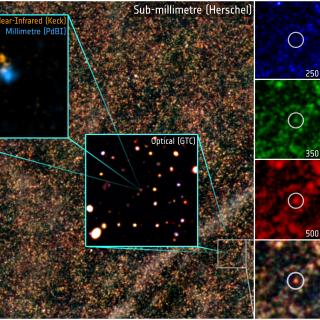Bibcode
Pastorello, A.; Reguitti, A.; Morales-Garoffolo, A.; Cano, Z.; Prentice, S. J.; Hiramatsu, D.; Burke, J.; Kankare, E.; Kotak, R.; Reynolds, T.; Smartt, S. J.; Bose, S.; Chen, P.; Congiu, E.; Dong, S.; Geier, S.; Gromadzki, M.; Hsiao, E. Y.; Kumar, S.; Ochner, P.; Pignata, G.; Tomasella, L.; Wang, L.; Arcavi, I.; Ashall, C.; Callis, E.; de Ugarte Postigo, A.; Fraser, M.; Hosseinzadeh, G.; Howell, D. A.; Inserra, C.; Kann, D. A.; Mason, E.; Mazzali, P. A.; McCully, C.; Rodríguez, Ó.; Phillips, M. M.; Smith, K. W.; Tartaglia, L.; Thöne, C. C.; Wevers, T.; Young, D. R.; Pumo, M. L.; Lowe, T. B.; Magnier, E. A.; Wainscoat, R. J.; Waters, C.; Wright, D. E.
Bibliographical reference
Astronomy and Astrophysics, Volume 628, id.A93, 16 pp.
Advertised on:
8
2019
Journal
Citations
20
Refereed citations
18
Description
We present the results of the monitoring campaign of the Type IIn
supernova (SN) 2018cnf (a.k.a. ASASSN-18mr). It was discovered about ten
days before the maximum light (on MJD = 58 293.4 ± 5.7 in the V
band, with MV = -18.13 ± 0.15 mag). The multiband
light curves show an immediate post-peak decline with some minor
luminosity fluctuations, followed by a flattening starting about 40 days
after maximum. The early spectra are relatively blue and show narrow
Balmer lines with P Cygni profiles. Additionally, Fe II, O I, He I, and
Ca II are detected. The spectra show little evolution with time and with
intermediate-width features becoming progressively more prominent,
indicating stronger interaction of the SN ejecta with the circumstellar
medium. The inspection of archival images from the Panoramic Survey
Telescope and Rapid Response System (Pan-STARRS) survey has revealed a
variable source at the SN position with a brightest detection in
December 2015 at Mr = -14.66 ± 0.17 mag. This was
likely an eruptive phase from the massive progenitor star that started
from at least mid-2011, and that produced the circumstellar environment
within which the star exploded as a Type IIn SN. The overall properties
of SN 2018cnf closely resemble those of transients such as SN 2009ip.
This similarity favours a massive hypergiant, perhaps a luminous blue
variable, as progenitor for SN 2018cnf.
Related projects

Formation and Evolution of Galaxies: Observations in Infrared and other Wavelengths
This IAC research group carries out several extragalactic projects in different spectral ranges, using space as well as ground-based telescopes, to study the cosmological evolution of galaxies and the origin of nuclear activity in active galaxies. The group is a member of the international consortium which built the SPIRE instrument for the
Ismael
Pérez Fournon